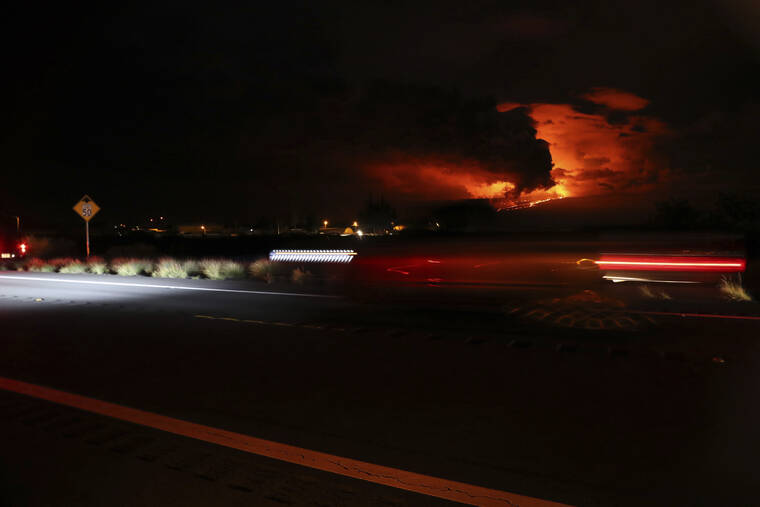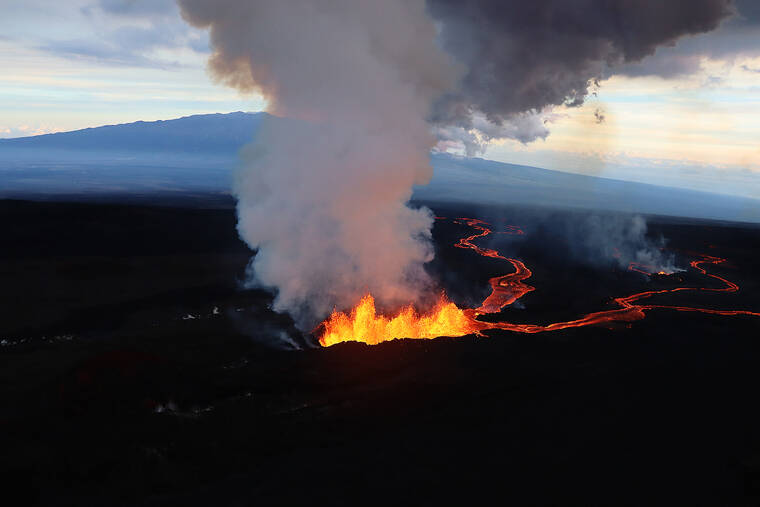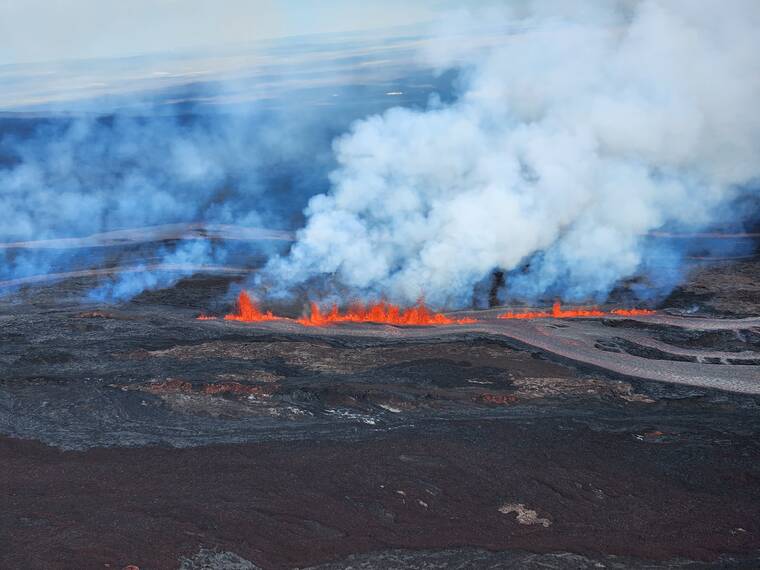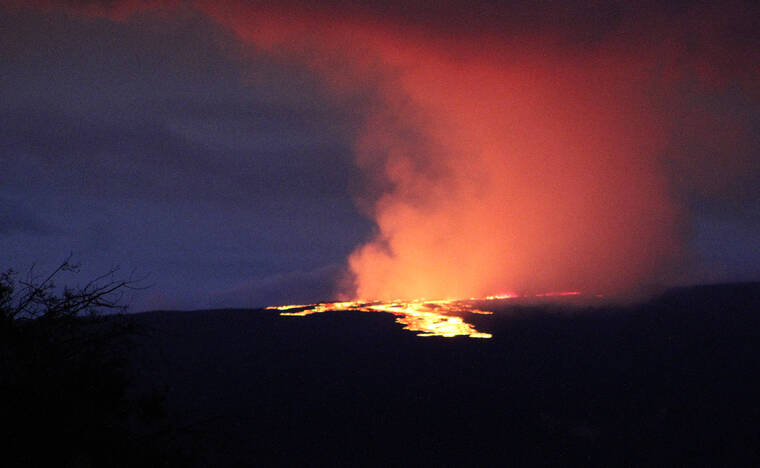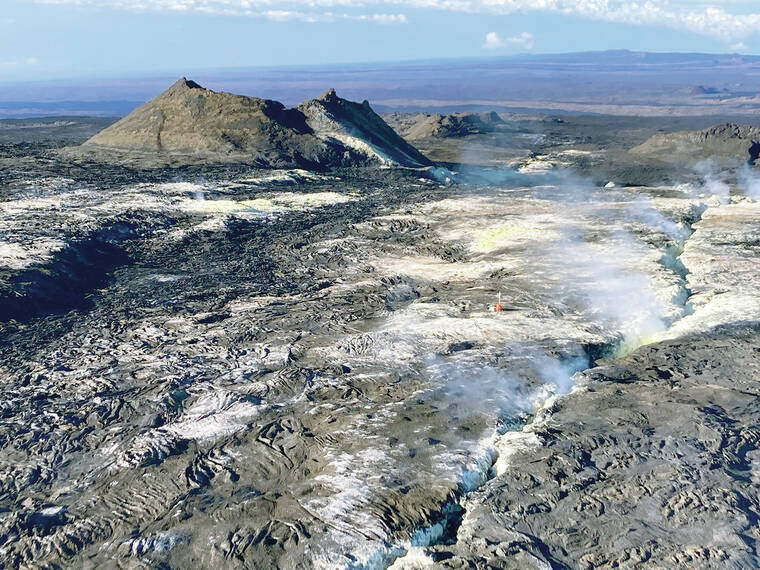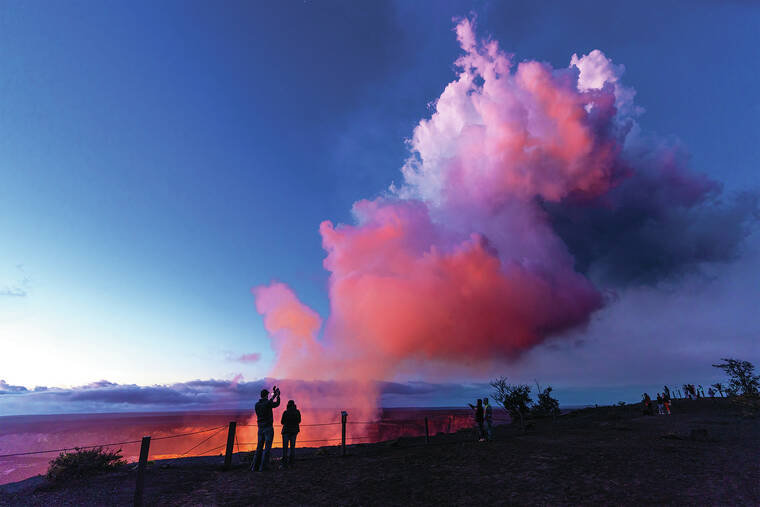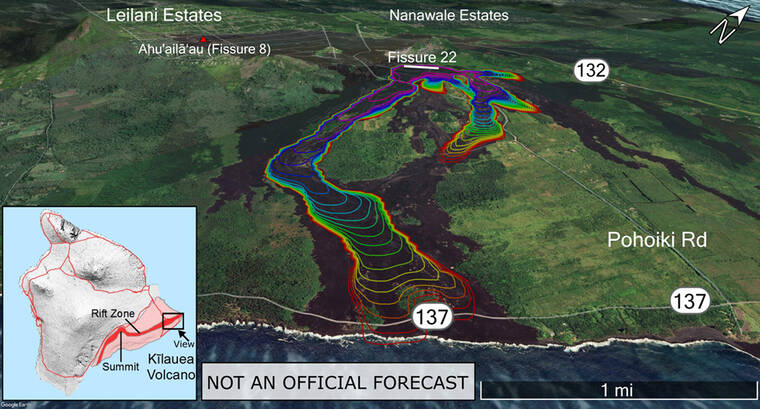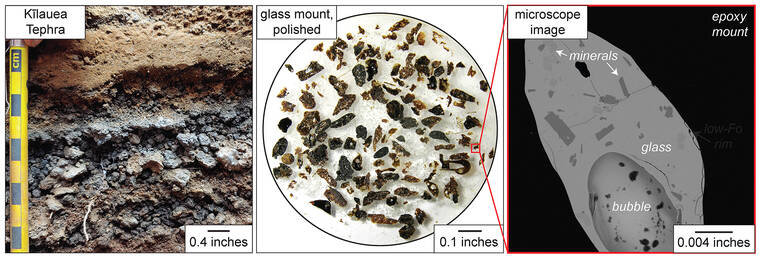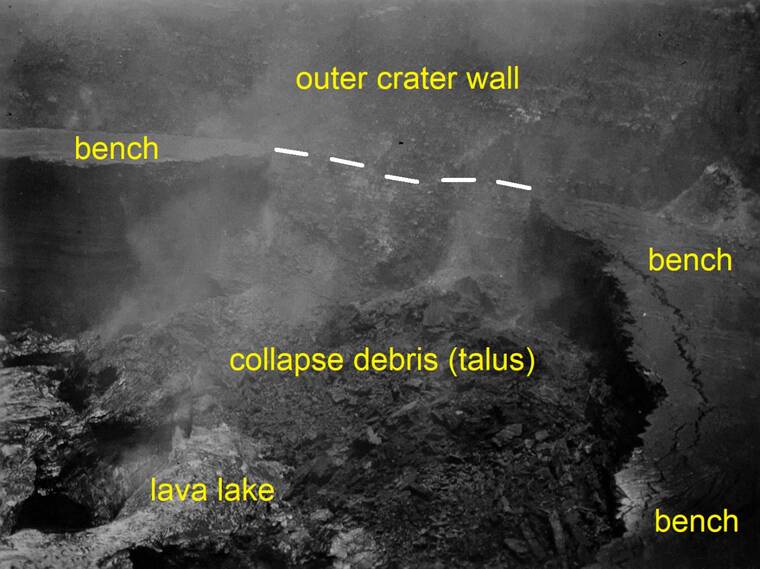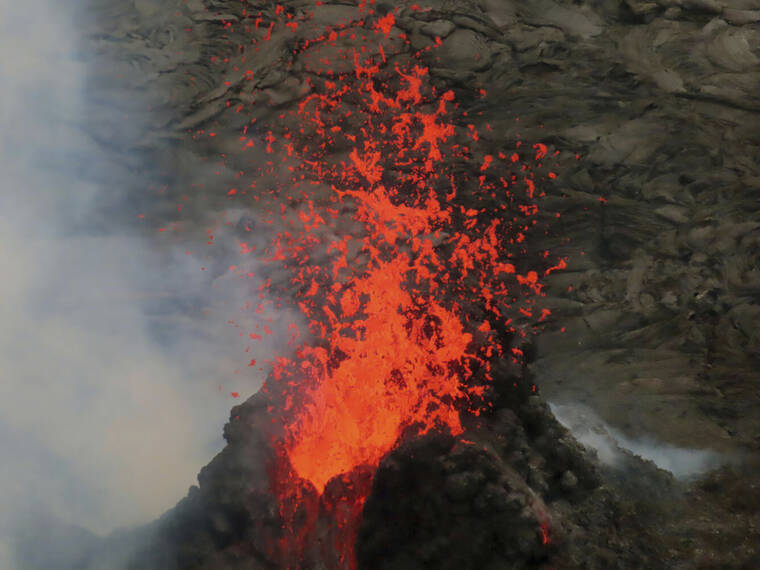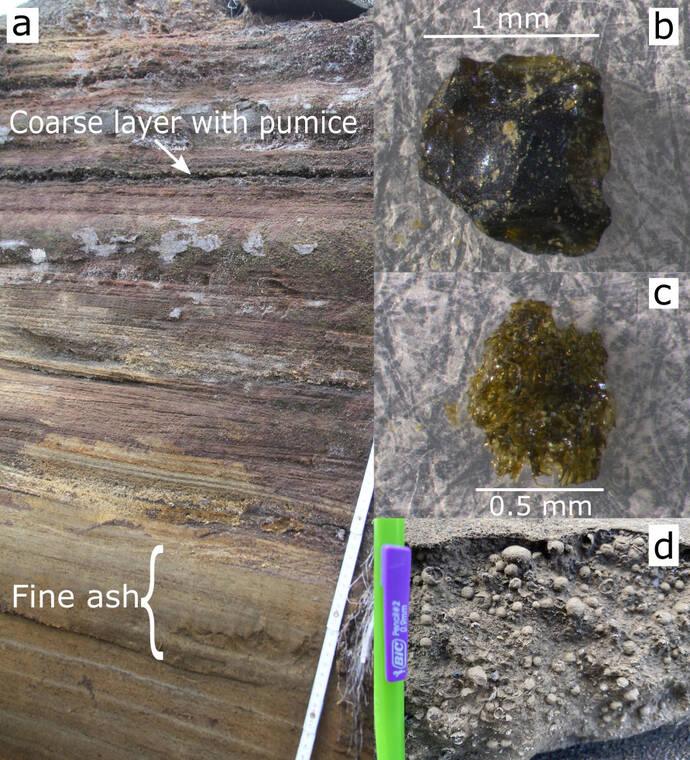Prayers? Bombs? Hawaii history shows stopping lava not easy
HONOLULU — Prayer. Bombs. Walls. Over the decades, people have tried all of them to stanch the flow of lava from Hawaii’s volcanoes as it lumbered toward roads, homes and infrastructure.
Lava oozes toward highway; Ige mulls National Guard activation
As lava flows ever closer to the Daniel K. Inouye Highway, Gov. David Ige on Wednesday said he is considering activating the Hawaii National Guard.
Northeast Rift Zone eruption of Mauna Loa continues
The Northeast Rift Zone eruption of Mauna Loa continues, with two active fissures feeding lava flows downslope, the Hawaiian Volcano Observatory reported Wednesday morning.
As lava approaches Saddle Road, officials work to manage the droves seeking to view eruption
Lava from Mauna Loa is not on track to approach populated areas anytime soon, but authorities now have to reckon with people flocking to see the eruption.
Mauna Loa eruption cuts access, power to Mauna Loa Observatory
Lava from the Mauna Loa eruption on Monday night crossed the access road to the Mauna Loa Observatory, knocking out access and power to one of only four NOAA laboratories across the globe that measure atmospheric conditions and monitor carbon dioxide levels.
Mauna Loa spews lava for first time since 1984; flows headed in ‘best possible direction’
Officials and residents are cautiously optimistic that Mauna Loa’s first eruption in nearly 40 years will be minimally disruptive.
Mauna Loa eruption: Two of three lava fingers appear to have stalled; third remains near 10,000-foot elevation
Mauna Loa meeting draws concerns
Ocean View residents did not seem particularly reassured following a community meeting regarding a potential Mauna Loa eruption.
Pair of earthquakes rattle Big Island
A pair of earthquakes rocked the Big Island on Friday and led to the closure of the Pahala Post Office’s retail lobby.
Volcano Watch: Earthquakes and volcanoes, a recipe for preparedness
Feeling occasional earthquakes is part of the experience of living in the State of Hawaii, especially on the Island of Hawaii. The vast majority of felt earthquakes are small, but the less common large earthquakes can be damaging, so it is important to be prepared.
Volcano Watch: Recent events at Mauna Loa remind us to be prepared for quick changes
The last eruption of Mauna Loa occurred in 1984 and began in a style typical of the volcano. At 10:55 p.m. on March 24, 1984, the rate of earthquakes under Mauna Loa started to rapidly pick up. While rates of earthquakes were already above normal, they quickly rose to two to three earthquakes per minute.
‘Unrest’ on Mauna Loa, no signs of imminent eruption
HONOLULU — Mauna Loa, the largest active volcano on the planet, is in a “state of heightened unrest,” but is not erupting and there are no signs of an imminent eruption, the Hawaiian Volcano Observatory said in an update Friday.
Current eruption of Kilauea began a year ago this week
Scientists and residents alike on Thursday will celebrate the one-year anniversary of the current volcanic eruption of Kilauea.
Volcano Watch: Where’s that lava headed and when will it get there?
When lava flows break out on the flanks of Kilauea or Mauna Loa, Hawaii residents and emergency management agencies want to know what to expect.
Volcano Watch: How Hawaiian rocks tell their stories
Follow along as we outline the journey of one of our volcanic samples used for geochemical analysis and the information we glean at each step.
Volcano Watch: A forgotten collapse of Halema‘uma‘u crater on June 5-7, 1916
Last month, a “Volcano Watch” article highlighted a lesser-known Mauna Loa eruption that ended May 31, 1916. Hawaiian Volcano Observatory (HVO) staff had to make a quick turnaround a week later when Kilauea Volcano’s Halema‘uma‘u crater began to subside. A series of collapse events took place from June 5-7, 1916, and observers described it as one of the most spectacular occurrences they had ever witnessed at Kilauea.
Volcano Watch: Hawaiian Volcano Observatory scientist sets sail across the Atlantic
June 8 was World Oceans Day, a day to appreciate the huge body of saltwater that covers about 71% of the Earth’s surface. Sometimes it’s easy to forget that our volcanic island is surrounded by oceans and one of the most distant places from continents on Earth. The ocean floor remains one of the most poorly understood places on our planet.
Kilauea Volcano lava flow steady after starts and stops
HONOLULU — Kilauea Volcano is now erupting a steady stream of lava after a period of intermittent pulsing.
Volcano Watch: What do vog and wildfire smoke plumes have in common?
Since 2010, University of Hawaii at Manoa researchers at the Vog Measurement and Prediction Program (VMAP) have been studying the dispersion of vog in Hawaii. The central goal of the effort has been to provide the public and emergency responders with accurate and timely forecasts that would help limit vog exposure for those in affected areas and communities.
Volcano Watch: How tephra deposits unlock the secrets of Kilauea volcano’s explosive past
I go to the summit of Kilauea most weeks to study the extent, thickness, and physical characteristics of a 400- to 500-year-old tephra deposit, the product of explosive eruptions and part of what is called the Keanakako‘i Tephra. The total deposit is up to 10 meters (30 feet) thick along the southern wall of Kilauea caldera, but it was created by fragment upon fragment of tephra falling to the ground from volcanic plumes rising out of the caldera.

